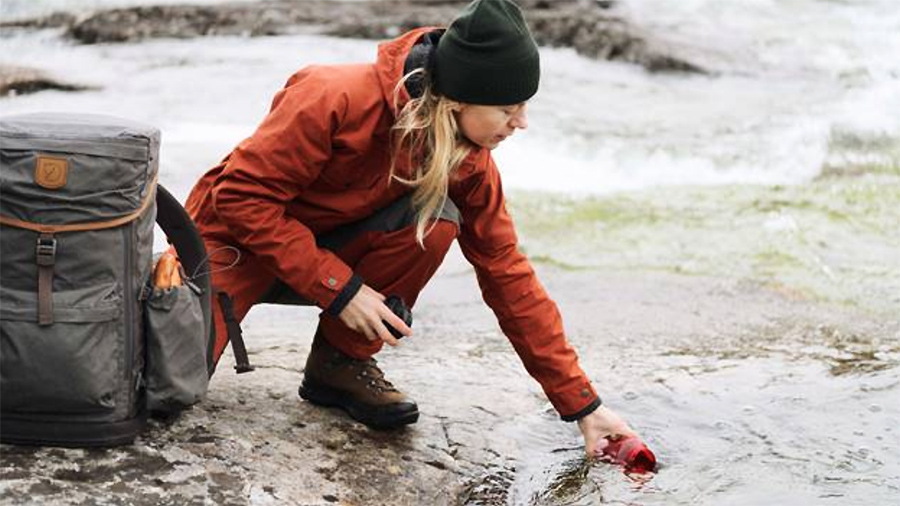Consolidated Fenix Outdoor International AG (Group) fourth-quarter sales grew 4 percent to €203.9 million, compared to €196.5 million in the prior-year comp quarter.
“We have ended another quarter of insecurity,” shared Martin Nordin, chairman of the board of Fenix Outdoor, in his notes to the market. “It is no surprise that we only saw limited growth in terms of sales. I was, especially in Frilufts, doubting that sales would match last year’s record numbers, given the recession and the energy prices. Therefore, I am positively surprised that we, despite the challenges, had such high sales within the Frilufts part of the business.”
The fourth quarter operating profit was €12.5 million versus €17.6 million in Q4 2021, a decrease of 28 percent. The result was said to be negatively affected by extraordinary expenses of €4.4 million, of which €3 million relates to positions in relation to returns and reservations for vacations, €0.8 million for reevaluation of a rental contract, and €0.6 million for cost related to the move of warehouse operation from 3PL in Kamloops to Fenix’s own operation in Calgary. The company also had operational FX losses in the quarter of €1.7 million. Without these extraordinary items, Nordin said they would have been in line with last year’s profit and thereby one of their best quarters ever.
Brands
The company’s Brands segment, which includes Fjällräven, Royal Robbins, Hanwag, Primus, and Fenix Outdoor, had sales of €55.4 million in the fourth quarter, growing 8 percent compared to €51.1 million in the prior-year quarter. Operating profit was €4.6 million for the quarter, down from €8.0 million in the prior-year quarter. The growth was said to be mostly driven by American retail. The Brands division has taken the largest part of the extraordinary expenses as much of it was related to returns from consumers, but Nordin said it is also related to the increase they have been facing in other areas such as IT and digital projects.
“In terms of sales in the Americas, we continued to grow. Despite having some cancellations related to economic conditions, supply chain and strategic decisions by some of the top retail partners in North America. The growth in local currency was 24 percent in the quarter and 29 percent for the year. Despite the logistical challenges in Canada, we were able to make up for lost sales in the 3rd quarter, although at a logistic cost mentioned.
The Americas is becoming a larger part of the Fenix business which Nordin said was confirmed in Q4 in both the direct-to consumer distribution as well as Brands/Wholesale. “It seems that these markets are recovering from recession faster and are less hit by the European security situation,” he reasoned.
Looking at the Brands direct-to-consumer business, Fenix posted growth of 7 percent in the quarter, predominantly driven by North America. “Our direct-to-consumer sales started out nicely in October even though a very hard competitive situation from a lot of competitors discounting to liquidate inventory, both brands and retailers,” Nordin explained. “November was an unusually weak month, but in December we saw major rebound, meaning that we hit last year’s record numbers almost everywhere. We did not participate in the discounting in the market in any major way, as we did not want to participate in this price eroding behavior given the possible long-term effects.”
Global Sales
Global sales had external net sales of €47.1 million in Q4, up from €43.1 in Q4 2021. The operating profit was €3.9, even with the prior year’s comp period. The European component of Global Sales “performed reasonably well,” Nordin shared, but the growth was said to be mostly in the Americas where the operating margin is slightly lower than in Europe. Another negative effect of the profit was currency fluctuations that affected the Asian business, in particular Taiwan and South Korea, which performed quite well from a sales perspective. Nordin said they are also seeing more of a recovery in their JV in China.
Frilufts
The company’s Frilufts operation reportedly had a good Q4 and came close to last year’s record sales. Especially encouraging for Nordin was the German operation that beat last year’s sales.
“In Scandinavia we had a more varied picture,” Nordin detailed. “Denmark and Finland were about 5 percent short of last year. Sweden made a recovery compared to earlier in the year and grew 1.5 percent vs last year in local currency but came in short in the consolidation due to the weak SEK. Norway had nice growth in the quarter but is still not in the black numbers. The mostly digital business in the U.K. struggled with discounting and consumer confidence but came in well making a reasonable profit on its sales.”
Fourth quarter sales in Frilufts was €101.4, down about 1 percent from €102.4) million in Q4 2021. Excluding the effect from the weak SEK, Nordin said it would have been up 1 percent. Our operating profit in Frilufts was €6,0 million (€8.9). The profit was hit with the €0,8 million revaluation of rental cost as well as 1,4Vas million in common costs like IT. The Swedish operation increased profit in the quarter but due to the weak Swedish Krona the contribution was €0,3 million lower than it would have been with the same exchange rate. Nordin said this means that the full-year sales in Frilufts was €347.7 million, up from €309.0 million in 2021 and EBIT was €5.7 million, compared to €12.9 million in the prior year. It is also worth noting that digital sales were “generally flat or slightly down on a quarter-to-quarter basis and that brick-and-mortar stood for the growth” in the markets where they grew.
Digital/Direct-to-Consumer
Fourth quarter Direct-to-Consumer (DTC) sales were €139.3 million, up 1 percent from €138.4 million in Q4 2021. Digital DTC sales were reported at €47.2 million, down 6 percent from €50.0 million in the prior-year quarter. Brick & Mortar delivered €92.1 million in sales in Q4, up 4 percent versus the €88.4 million contributed in Q4 2021. Digital now represents 34 percent of DTC, compared to 36 percent in Q4 2021. Full-year total DTC sales were €455.6 million, up 14 percent from €400.6 million in full-year 2021. For the full year, Digital was down 2 percent to €146.3 million, while Brick & Mortar jumped 23 percent to €308.3 million. Digital was 32 percent of DTC sales for the year, compared to 38 percent in full-year 2021.
“These numbers indicate a new balance in the retail area, and it seems that the new proportions lay somewhere around 30-35 percent digital vs brick and mortar,” Nordin surmised. “Our assumption is that this level is the new base. It should however be said that there is a difference between markets as well a type of stores and retail. This should in no way indicate that we believe that the digital transformations have stopped, rather, it creates a baseline for how we will approach our investments and cost structure going forward.”
Photo courtesy Fenix Outdoor
















